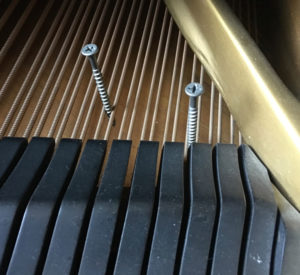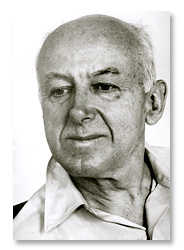I am writing a piece, Wēpan, for string quartet and piano. I fiddle at my grand piano, my grandmother’s Steinway she purchased in 1921. I never much cared for the sound of this piano until I reluctantly moved it to my house. As the instrument slowly acclimatizes to my space, my affection grows, the bass become more resonate, the treble less piercing.

But today, I am looking for a sound for my new piece. I slowly thread a long dry wall screw between the twin D bass strings and another a bit higher. The notes, when articulated are almost unearthly – like a dark stabbing. Position the screws just right and the harmonic series lights up. I can hear the music of my new piece ducking and merging into this strange sound.

I am suddenly reminded of one of my personal heroes – Henry Cowell and his work with extended techniques for the piano. He was a great American original, and now very much forgotten along with Carl Ruggles, Dane Rudhyar, and Conlan Nancarrow.
Cowell paid little allegiance to the European inspired contemporary music or atonalism; he was his own man. At sixteen, so legend tells, he made enough money at an odd job that he bought a piano. I imagine him scooting his new acquisition through the cobbled streets, and once safely inside his home, tearing away the wooden casing and thrusting his hands inside the piano’s underbelly. Drumming, strumming and arm rolling, Cowell beget a whole new way of producing sound at the piano.
In truth, the piano is an strange beast; part string and part mechanical.
Most instrumental performers have an immediacy between themselves and the sound they produce. A string player presses flesh into string, using the bow to bring the pitch to life. For winds and brass, breath becomes tone. But pianos have this odd intermediary – I press down the piano key and the piano action throws a hammer at an inner string to produce the sound. I do not touch the string.
Of course, there are many ways I can play one note or sound on the piano – I can strike the ivory with the fleshy part of my finger, or closer to the bone. I can roll off the key feathering the tone or flick it into the air. I can adjust my body weight as I play, plunging into the sound with the torque of my back, or relax, swooping in with a gentle slide. But, how can I touch the sound itself, this living, breathing organism?
I experience a single note or tone as having an outer shell-like-flesh with a soft inner core. The outer layer repels somewhat, but the inner core yields. I long this center of sound, wanting to get as close as I can. Like the way I am at an art museum, standing as close to the corner of a painting as the guard will allow, peering in, desirous of folding into the field of colors and stroke.
I fantasize that each tone has an evolutionary life story. Long, long ago it lived in a shadow land of half; muted, slipping and sliding – before it was pitch. What I call pre-sound; this the territory of the inside of the piano that Henry Cowell reveals.
Delving into Cowell’s works taught me to listen and investigate deeper than melody or rhythm – to hear sounds as separate, individual, and having a life of their own. He inspired me to think of the actual essence of sound itself, bare, stripped down and fundamental.
The drywall screws in my piano for my piece, Wēpan, is the color of deep earth and high dark caverns. Metallic, hollow, jagged, rough, both lingering and disappearing – exactly what I need.
By the way, have you ever tried dental floss on the lower strings of the piano?
Listen to an excerpt of Wēpan for string quartet and piano.
For more on Henry Cowell, read the New York Times article, Henry Cowell—An Influential ‘American Original’.
